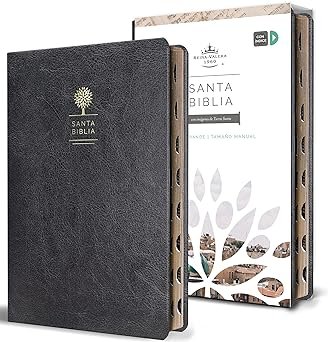Did you know that the Bible was not written in a single language, or even in a single era?
Behind every page we read in our modern translations, there is a complex and fascinating linguistic background that spans millennia, cultures, and empires.
Understanding the original languages of the Bible Hebrew, Aramaic, and Koine Greek is not just a matter of scholarship, but a key that opens new dimensions in the interpretation of the divine message.
Every word written in these languages holds nuances, meanings, and structures that, when translated, can be enriched… or lost.
Are you ready to discover why God chose different languages to reveal His Word and how this continues to impact our lives today?
Here's the content, completely organized, numbered, and aligned, ready to be used professionally in Google Docs:
Brief explanation of the global impact of the Bible
The Bible is the most translated, distributed, and read book in history.
It has shaped cultures, laws, arts, languages, and social movements around the world.
1.1 Geographical and cultural scope
Presence in more than 2,800 languages:
This makes it the most accessible text globally, impacting communities from remote villages to urban centers.
Influence on universal values:
Judeo-Christian ethics have influenced human rights, social morality, and legal systems on different continents.
1.2 Transformation of lives
Personal and community change:
Millions of people have testified to how reading the Bible has transformed their lives, decisions, and surroundings.
Impact on education and literacy:
Many indigenous languages have been preserved thanks to biblical translations that promoted the development of alphabets and educational programs.
Why is it important to know the original languages of the Bible?
Studying the Bible in its original languages allows for a more accurate understanding of the message.
Translations, although useful, do not always capture all the nuances of the Hebrew, Aramaic, or Greek text.
2.1 Access to deep meaning
Avoid misinterpretations:
Many concepts are lost or distorted in translation, especially technical or cultural terms.
Recovering the historical context:
The original words were loaded with meaning for readers in the first century or ancient Israel, which is lost without knowledge of the language.
2.2 Greater theological richness
Discovery of poetic and literary structures:
For example, Hebrew parallels and Greek wordplay are only fully understood in their original language.
Exploring key terms:
Words like “shalom,” “metanoia,” or “logos” contain teachings that require more than a literal translation.
How language influences the interpretation of sacred text
Language conveys not only information, but also culture, intention, and emotion.
Therefore, knowing the language in which the Bible was written helps us to correctly interpret its content.
1. Theological and doctrinal meaning
1.1 Subtle changes, doctrinal changes:
A poor translation can alter a key teaching, such as the concept of “justification” or “sin.”
1.2 Practical example:
In Hebrew, “to know” (yada) implies intimacy, not just information.
This transforms the interpretation of passages like “knowing God.”
2. Clarity in the message
2.1 Better understanding of the original audience:
By studying the original language, we come closer to how its first listeners or readers understood it.
2.2 Identification of rhetorical figures:
Metaphors, hyperboles, and parallels are best appreciated in the original language, which prevents literal interpretations where they do not correspond.
Original languages of the Bible
To fully understand the Holy Scriptures, it is vital to know the languages in which they were originally written.
Here we explain in detail what they are, their characteristics, and how they influence biblical interpretation.
1. Hebrew: The language of the Old Testament
Hebrew was the predominant language in the writing of the Old Testament.
Its linguistic richness and poetic structure provide a unique depth to the biblical text.
1.1 Characteristics of Biblical Hebrew
Use of the consonant alphabet:
Biblical Hebrew is written with only consonants, which leaves room for multiple interpretations depending on the context.
Pictographic and symbolic language:
Each Hebrew word has deep roots with visual and spiritual meanings that enrich the understanding of the text.
1.2 Differences with modern Hebrew
Linguistic simplification:
Modern Hebrew has lost some grammatical forms and semantic richness that Biblical Hebrew retains.
Secular use versus sacred use:
While modern Hebrew is used in everyday life, biblical Hebrew has a deeper theological and historical weight.
1.3 Books originally written in Hebrew
Almost the entire Old Testament:
Books such as Genesis, Exodus, Leviticus, Numbers, Deuteronomy and most of the prophets were written in Hebrew.
Poetry and wisdom:
Psalms, Proverbs, and Ecclesiastes were also originally written in Hebrew, with literary structures rich in parallelism and symbolism.
2. Aramaic: The language of exile and of the people
Aramaic was introduced into certain parts of the Bible by outside influence.
It was a lingua franca of the Middle East during periods of exile and foreign rule.
2.1 What is Aramaic and how did it come into the Bible?
Semitic language related to Hebrew:
Its structure is similar to Hebrew, but with different phonetics and vocabulary.
Influence of the Babylonian and Persian Empire:
The Israelites, in contact with other nations, incorporated Aramaic into communication and some writings.
2.2 Books and sections written in Aramaic
Specific passages in Daniel and Ezra:
Some portions of these books are entirely in Aramaic, such as Daniel 2:4 to 7:28.
Idiomatic expressions:
There are some preserved phrases in Aramaic that reflect the everyday speech of the people in certain historical periods.
2.3 Jesus and Aramaic
Jesus's mother tongue:
Jesus spoke primarily Aramaic, although he also knew Hebrew and possibly some Greek.
Famous phrases in Aramaic:
“Eli, Eli, lama sabactani” and “Talita cumi” are direct expressions in Aramaic preserved in the Gospels.
3. Koine Greek: The language of the New Testament
Koine Greek was the language used to write the entire New Testament.
Its use was strategic to reach the Greco-Roman world of the 1st century.
3.1 What is Koine Greek
Simplified version of classical Greek:
It was a common language accessible to the people, not reserved only for the intellectual elite.
Language of commerce, culture and religion:
It allowed the Gospel message to spread rapidly throughout the Roman Empire.
3.2 Differences with classical Greek
Less grammatical complexity:
Koine Greek eliminated many of the complex forms of Ancient Greek, facilitating its widespread use.
Practical approach:
It was designed for direct and clear communication, which favored the preaching of the Gospel.
3.3 Examples of key expressions in Greek
Words with deep theological meanings:
Terms like “agape” (unconditional love), “logos” (verb, word) or “koinonia” (communion) can only be understood in their full dimension from the original Greek.
Famous passages:
John 1:1 (“In the beginning was the Logos”) is a phrase with multiple layers of meaning that only Koine Greek allows to be fully explored.
Why were different languages used in the Bible?
The Bible was not written all at once or by a single author, but rather over a thousand years, in very diverse historical and geographical contexts.
This diversity of circumstances led to the use of different languages throughout the development of the sacred text.
1. Influence of conquests and exile
The empires that dominated the people of Israel profoundly influenced their language, writing, and culture.
Each conquest introduced new languages that ended up affecting the writing of some biblical books.
1.1 Assyrian and Babylonian rule
Adoption of Aramaic as an official language:
After the Babylonian exile (6th century BC), Aramaic became the common language among the Jews, partially displacing Hebrew.
Preservation and transmission of texts:
During the exile, some writings were translated from Hebrew into Aramaic to maintain their understanding among the people.
1.2 Greek conquest with Alexander the Great
Diffusion of Koine Greek:
Hellenization spread the use of Greek throughout the Empire, including Judea.
Translation of the Scriptures into Greek:
The famous Septuagint was born out of necessity for Jews who no longer read Hebrew, especially in the diaspora.
1.3 Roman rule
Preservation of Greek in New Testament Times:
Although Rome spoke Latin, Greek remained the language of communication in the east of the empire.
Therefore, the New Testament was written entirely in Koine Greek.
2. Linguistic changes over the centuries
Like any living language, the biblical languages evolved over time.
These changes affected the way the Bible was written and understood at different historical moments.
2.1 Evolution of Hebrew
From Biblical Hebrew to Post-Exilic Hebrew:
Hebrew underwent major transformations between the 10th and 2nd centuries BC, including changes in grammar and vocabulary.
Influence of Aramaic on Hebrew:
After centuries of contact, many Aramaic words were integrated into late Hebrew.
2.2 Emergence of dialects
Regional diversification:
In different geographical areas, Jews adopted idioms and variations of the dominant language.
Hybrid languages in the diaspora:
Combinations of Hebrew, Aramaic and Greek were formed that enriched and also complicated textual transmission.
2.3 Translations and interpretations
The transition to new languages raises new questions:
Every time the Bible is translated into another language, interpretive decisions must be made that affect the original meaning.
Example:
A word with multiple meanings in Greek can be reduced to a single option in another language, limiting understanding.
3. Cultural contexts of each biblical period
Each language used in the Bible corresponds to a historical moment and a cultural need.
Knowing these contexts allows us to understand why one language was used and not another.
3.1 Hebrew as a national identity
Language of the Covenant and the Law:
Hebrew was the language of the chosen people and of the Torah, used in rituals, prophecies and psalms.
Reflection of an agricultural and tribal culture:
Hebrew terms and expressions reflect Semitic thought, concrete and experiential.
3.2 Aramaic as the language of the people
Everyday language of exile:
During the captivity, Aramaic became the common language, even more widely understood than ancient Hebrew.
Bridge between cultures:
It allowed God's message to be communicated to non-Jewish peoples in the same language that everyone understood.
3.3 Greek as a missionary language
Gospel Expansion Tool:
Koine Greek was the universal language of the Roman Empire, facilitating the spread of Christianity.
Philosophical and theological context:
Many key New Testament concepts adopt Greek terms with profound implications for philosophy and logic, such as “logos” or “soteria” (salvation).
Transition from oral to written texts
Before there were scrolls, manuscripts, or codices, the Bible was transmitted orally.
This section explains how the transition from oral tradition to writing took place, and how the alphabets that shaped sacred texts developed.
1. Oral tradition in the Hebrew people
For centuries, the people of Israel transmitted divine teachings through spoken stories.
This oral tradition was key to preserving the identity, history and laws of the people.
1.1 Culture of verbal transmission
Collective memorization:
The Hebrew people were trained from a young age to memorize and repeat entire passages of the Torah.
Family and community gatherings:
Festivals, rituals, and events served as key moments for passing stories from generation to generation.
1.2 Oral structure in biblical narrative
Use of parallels and repetitions:
These elements facilitated memorization and collective learning.
Stories designed to be told:
Many stories were written down centuries after they were told orally, preserving their narrative style.
2. The establishment of the canon and the need to write
Over time, oral tradition gave way to the need to leave teachings in writing.
This was due to factors such as exile, dispersion, and the need to faithfully preserve the Scriptures.
2.1 Threat of forgetting or distortion
Loss of leaders and teachers:
During exile and wars, many sages and prophets died, endangering the accurate transmission.
Diversity of interpretations:
Without a written reference, each group could develop different versions of the stories.
2.2 Consolidation of the biblical canon
Compilation and selection of texts:
Priests and scribes began to write and compile books considered inspired.
Definition of the official text:
Over time, certain works were recognized as “canonical” and others were left out of the sacred text.
2.3 Institutionalization of education
Public reading in synagogues:
Written texts allowed everyone to hear the same version of the Scriptures in places of worship.
Creation of copies by scribes:
The scribes were charged with accurately replicating the texts, preserving the integrity of the message.
3. Development of the Hebrew and Aramaic alphabet
To record divine revelation it was necessary to develop appropriate writing systems.
Hebrew and Aramaic evolved to adapt to this historical and spiritual need.
3.1 Ancient Hebrew alphabet
Canaanite origins:
The Hebrew alphabet developed from ancient Semitic systems, such as the Phoenician.
Writing without vowels:
Biblical Hebrew was written with only consonants, which required great familiarity with the language for correct interpretation.
3.2 Evolution towards square Hebrew
Change in the post-exilic period:
During and after the exile, the Jews adopted a more uniform and legible writing style, known as Square Hebrew.
Basis of Modern Hebrew:
This typeface is the one currently used in Hebrew texts, including biblical books.
3.3 Aramaic writing
Alphabet similar to Hebrew:
Aramaic used a very similar writing system, which facilitated the integration of bilingual texts.
Cultural and religious importance:
Many official and religious documents were written in Aramaic during the Persian and Babylonian periods, becoming a sacred language for certain communities.
Writing materials and forms
The way the Bible was written depended on the resources available at each time.
Here we analyze the materials used, the tools employed by scribes, and the locations where the sacred texts were preserved.
1. Papyrus, scrolls and codices
Biblical texts were not always written on the same type of support.
Each material marked a different stage in the transmission of the Word of God.
1.1 Papyrus
Plant origin:
Made from the papyrus plant, this material was common in Egypt and used for early manuscripts.
Fragility and cost:
Although it was lightweight and easy to use, it deteriorated over time and required special care.
1.2 Parchment
Made of animal skin:
It was more durable than papyrus and became the preferred material for important texts.
Greater durability:
It allowed writing on both sides and stood the test of time better, ideal for Scripture.
1.3 Codex
Predecessor of the modern book:
It consisted of sheets joined by a spine, making it easier to read and transport.
Revolution in textual transmission:
It allowed faster access to different passages without having to unroll long scrolls.
2. Ancient writing tools
The writing materials were rudimentary, but effective.
Scribes developed precise techniques to ensure the legibility and fidelity of the texts.
2.1 Quills and brushes
Instruments made of reeds:
They were cut with a fine point and used to write with ink on papyrus or parchment.
Craftsmanship precision:
Letter tracing required specialized skill and training.
2.2 Natural ink and pigments
Prepared with charcoal and gum:
The ink was made by hand, using local ingredients such as soot or ground minerals.
Colors for emphasis:
In some cases, red ink was used to highlight key titles or sections.
2.3 Tables and templates
Writing support:
Scribes worked on flat tables and used guides to maintain text alignment.
Minimal correction:
Due to the value of the material, care was taken to avoid mistakes, and in many cases, the work was supervised by other experts.
3. Conservation of texts in temples and synagogues
Once written, sacred texts were treated with extreme reverence.
Its preservation was essential for the intergenerational transmission of the faith.
3.1 Sacred deposits
Stored in special places:
In the temple of Jerusalem, the scrolls were stored in urns or compartments designed to preserve them.
Restricted access:
Only priests or Levites had access to the most sacred texts.
3.2 Public reading
Central part of the cult:
In synagogues, the texts were read weekly, which required well-preserved and legible copies.
Spiritual formation of the people:
These readings were the basis for religious teaching and legal interpretation.
3.3 Respect for old texts
The sacred texts were not destroyed:
When a manuscript deteriorated, it was buried in a geniza (ritual repository) as a sign of respect.
Immutable spiritual value:
Although physically worn, the texts maintained their sacred character for the community.
Key Old Translations
To make the Scriptures accessible to more people, several key translations were made.
These versions not only facilitated understanding, but also influenced theology and the formation of the canon.
1. The Septuagint: from Hebrew to Greek
It was the first major translation of the Hebrew Bible.
Its creation marked a before and after in the history of biblical interpretation.
1.1 Historical context
Translation in Alexandria:
Made in the 3rd century BC by Jewish scholars for the Hellenistic community that no longer read Hebrew.
Support of King Ptolemy II:
The work was part of the project for the Library of Alexandria, one of the largest in the ancient world.
1.2 Theological impact
Text used by the apostles:
Most of the Old Testament quotations in the New are taken from the Septuagint.
Influence on early Christianity:
This version facilitated the spread of the Gospel in the Greco-Roman world.
1.3 Differences with the Hebrew canon
Deuterocanonical books included:
The Septuagint contains books that are not in the Hebrew canon, such as Wisdom and Maccabees.
Later debate in Judaism and Christianity:
These differences led to discussions about which books should be considered inspired.
2. The Peshitta: Syriac version of the Bible
This translation was fundamental for the Eastern churches.
It allowed access to the Scriptures in a language related to Jesus' Aramaic.
2.1 Language and context
Syriac as a variant of Aramaic:
The Peshitta was written in a language that combined features of biblical Aramaic with Eastern Christian tradition.
Liturgical and doctrinal use:
It was adopted as an official text in several churches in Syria and Mesopotamia.
2.2 Translation of the Old and New Testaments
Full version of the Bible:
It includes both the Old Testament (based on the Hebrew text) and most of the books of the New Testament.
Absence of some epistles:
In its early versions, it did not contain books such as 2 Peter, 2 and 3 John, Jude, and Revelation.
2.3 Historical and linguistic value
Testimony of the Eastern tradition:
The Peshitta preserves theological interpretations specific to Syriac Christianity.
Important resource for comparative studies:
Helps verify translations and detect textual variants.
3. The Targum: Aramaic paraphrase of the Old Testament
The Targum was a way of bringing the Scriptures closer to people who no longer understood Hebrew well.
Rather than a literal translation, it offered an interpretation with added explanations.
3.1 Function and purpose
Accessible interpretation:
It was used in synagogues so that people could understand the texts read in Hebrew.
Contextual adaptation:
It included explanations and comments inserted into the translated text itself.
3.2 Main targums
Targum of Onkelos (Torah):
Respected for its fidelity to the original text.
Targum of Jonathan (Prophets):
Freer and with midrashic additions that enrich the theological meaning.
3.3 Exegetical value
Bridge between language and doctrine:
The Targum reveals how the Jews of the post-exilic period interpreted their Scriptures.
Basis for rabbinic studies:
It is a key source for understanding ancient Jewish hermeneutics.
Relevance of biblical languages in theology
The original languages of the Bible convey not only content but also profound theological meaning.
This section explains how certain terms, translations, and interpretations can directly impact biblical doctrine and understanding.
1. Words that do not have an exact translation
Some words in Hebrew, Aramaic, or Greek contain concepts that cannot be expressed in a single word in other languages.
This poses significant challenges when translating the Bible.
1.1 Terms with conceptual richness
Shalom (Hebrew):
It not only means “peace,” but also fulfillment, well-being, and harmony with God and others.
Agape (Greek):
It is a type of unconditional and sacrificial love that has no exact equivalent in many languages.
1.2 Loss of nuances when translating
Meaning reduction:
When a word rich in meaning is translated into a language with a limited vocabulary, doctrinal depth is lost.
Need for explanatory notes:
Many translations use footnotes or comments to explain what doesn't fit in a single word.
2. Misinterpretations due to language changes
Bible translation involves decisions that can influence how a doctrine is understood.
Subtle changes in grammar or vocabulary can profoundly alter the interpretation of a passage.
2.1 Ambiguities in Greek or Hebrew
Polysemic words:
Words that have multiple meanings can be misinterpreted if the original context is not studied.
Example:
The Greek word “dikaiosynē” can be translated as justice, justification, or righteousness, depending on the context.
2.2 Problems in older versions
Copyist errors or editorial decisions:
Some older translations added or removed words to adapt the text to a particular theology.
Impact on doctrines:
Phrases like “penance” instead of “repentance” (metanoia) have generated different doctrinal interpretations.
3. Examples of doctrines affected by translation
Christian theology has been shaped in part by how certain key terms have been translated.
Here are some examples where language has influenced doctrinal formulation.
3.1 Salvation and justification
Confusion between works and faith:
The word “justification” (dikaiosynē) has been interpreted in different ways depending on theological tradition and translation.
Distinction between grace and merit:
Latin translations influenced Catholic doctrines, while Reformed translations offered other nuances.
3.2 Repentance
Metanoia vs. penance:
The Greek word “metanoia” implies a change of mind, but it was translated as “penitence” in some versions, generating a sacramental interpretation.
3.3 Holy Spirit
Use of the definite article:
In Greek, “the Spirit” can refer to a person or a force depending on the use of the article, which has given rise to theological debates about the personality of the Holy Spirit.
Languages of the Bible and Modern Studies
Today, the study of biblical languages is an essential tool for theologians, pastors, and scholars.
These languages allow access to the original text and understanding it with greater depth and precision.
1. The importance of Hebrew, Aramaic and Greek for theologians
Knowledge of biblical languages is a key competency in serious theological training.
It allows you to interpret the Bible without relying solely on translations.
1.1 Direct access to the text
Study without filters:
It allows you to read Scripture as it was written, identifying nuances, literary styles and linguistic structures.
Contextual analysis:
It helps to place each word within the historical, cultural and grammatical framework of the biblical moment.
1.2 Tool for preaching and teaching
Greater precision in exposure:
The preacher who knows the original languages can better explain the deeper meaning of the texts.
Interpretive authority:
The use of biblical languages provides academic and doctrinal rigor in study and teaching.
2. Bible schools and seminaries that teach these languages
More and more Christian institutions are including biblical language courses in their programs.
Linguistic study has become indispensable for a solid and contextualized theology.
2.1 Evangelical and Catholic seminaries
Formal Curriculum:
Many seminaries require at least two semesters of Hebrew and Greek to graduate.
Immersion programs:
Some schools offer intensive courses in reading and analyzing original texts.
2.2 Online education
Remote access to Bible training:
Courses and diplomas in Hebrew and Greek are available online, with interactive materials and tutors.
Example:
Institutions such as Israel Institute of Biblical Studies either Biblical Language Center They offer classes in Spanish and English.
2.3 Self-taught initiatives
Accessible resources for all:
Any interested believer can start learning with free apps, books, and platforms.
Continuing education:
You don't have to be a professional theologian to study these languages and delve deeper into the Word.
3. Digital tools for biblical linguistic study
Thanks to technology, it's easier than ever to access the original languages of the Bible.
There are tools that facilitate the grammatical, semantic and contextual analysis of texts.
3.1 Software and applications
Logos Bible Software:
Complete platform with interlinear, lexicons, dictionaries, and integrated grammar analysis.
Blue Letter Bible:
Free access to original words, meanings, and cross-references across multiple translations.
3.2 Interlinear Bibles
Direct comparison:
They allow you to see the original text along with its word-for-word translation.
They facilitate learning:
They are useful for both advanced and beginner students.
3.3 Dictionaries and lexicons
Roots and meanings query:
Tools such as Strong, Thayer either BDB They offer detailed definitions of terms in Hebrew and Greek.
Thematic studies:
They help conduct in-depth analysis of keywords such as “grace,” “kingdom,” “blood,” “sacrifice,” and others.
Digital tools for biblical linguistic study
Thanks to technology, it's easier than ever to access the original languages of the Bible.
There are tools that facilitate the grammatical, semantic and contextual analysis of texts.
1. Software and applications
1.1 Logos Bible Software:
Complete platform with interlinear, lexicons, dictionaries, and integrated grammar analysis.
1.2 Blue Letter Bible:
Free access to original words, meanings, and cross-references across multiple translations.
2. Interlinear Bibles
2.1 Direct comparison:
They allow you to see the original text along with its word-for-word translation.
2.2 They facilitate learning:
They are useful for both advanced and beginner students.
3. Dictionaries and lexicons
3.1 Query of roots and meanings:
Tools such as Strong's, Thayer's, or BDB offer detailed definitions of terms in Hebrew and Greek.
3.2 Thematic studies:
They help conduct in-depth analysis of keywords such as “grace,” “kingdom,” “blood,” “sacrifice,” and others.
Book recommendations for further study
Studying the original languages of the Bible opens the door to a richer and more faithful understanding of the message of Scripture.
Here are three highly recommended books to help you begin or deepen your biblical linguistic study:
📘 Hebrew-Spanish Interlinear: Biblia Hebraica Stuttgartensia
Ideal for exploring the original Hebrew text.
This edition presents the Hebrew text with its corresponding word-for-word translation into Spanish, facilitating grammatical and semantic study.
📙 The Complete Word Study New Testament (in Koine Greek)
Perfect for analyzing the New Testament word by word.
It includes references to Greek vocabulary, morphological analysis, and linguistic commentary that will help you understand the deeper meaning of the original text.
📗 Learn New Testament Greek
Practical introductory course for Christians who wish to study theology.
It offers a step-by-step methodology for learning to read the New Testament in its original language, without the need for prior knowledge.
This is only for entrepreneurs, business owners and freelancers who trust in God.
If you are committed to biblical values such as integrity, excellence, and service to others, and want to grow in your business or project without compromising your faith, this section is for you:
🚀 Are you ready to launch your website, SaaS, or online store with excellence?
Visit NippyLaunch.com, a platform created for Christian entrepreneurs who want professional tools without depending on the world.
📈 Do you want to increase your sales with digital advertising campaigns without deception or manipulation?
Discover CleefCompany.com, where we offer marketing with real results and biblical principles.
🧮 Do you need tools to help you make wise decisions in your business?
Find over 600 calculators for business, finance, health, productivity and much more at CalculatorCCH.com, the free site created for entrepreneurs who want to manage their resources wisely.
Frequently Asked Questions About the Languages of the Bible
How many languages does the original Bible have?
Three: Hebrew, Aramaic and Koine Greek, depending on the historical period and cultural context of each part.
Did Jesus speak Aramaic, Hebrew or Greek?
Mainly Aramaic, although he also knew Hebrew to read the Scriptures and probably some Greek due to the cultural context.
Why isn't the Old Testament all in Hebrew?
Because some sections were written during the Babylonian exile, when Aramaic was the common language of the Jewish people.
What is the difference between Koine and Classical Greek?
Koine Greek is a simplified form of Classical Greek, used as a common language in the Roman Empire.
Is Aramaic still used today?
Yes, although it's an endangered language. Some Eastern Christian communities still use it in liturgical contexts.
Where can I study Biblical Hebrew or Greek?
In theological seminaries, Christian universities, and online platforms such as Logos, the Israel Institute of Biblical Studies, and the Biblical Language Center.
Why is the Septuagint so important?
Because it was the first Greek translation of the Old Testament and was widely used by the apostles and early churches.
Which language is considered most faithful to the original message?
Each language has its own fidelity to its context. The original Hebrew and Greek are essential to accurately interpreting the message.
Can I read the Bible in the original languages without knowing them?
Yes, with the help of interlinear Bibles and software like Logos or Blue Letter Bible, you can study the original text without being an expert.
What is the best modern translation based on the original languages?
Versions such as the Reina-Valera Actualizada, the Bible of the Americas, or the New Jerusalem Bible are faithful to the original texts and widely respected.
Conclusion
Throughout this tour of the languages of the Bible, we have discovered that Hebrew, Aramaic and Greek were not only tools of communication, but sacred vehicles of revelation.
Every language, every letter, every grammatical turn of phrase adds richness, context, and depth to the eternal message of Scripture.
Studying these languages is not something reserved for academics.
It is an invitation to go beyond the surface, to connect with the living roots of the Word of God, and discover a universe that has transformed entire cultures and continues to transform hearts.
And now we want to hear from you:
Have you ever thought about how the original language can change the way you understand the Bible?
Leave us a comment and share your experience or questions about this fascinating topic. Let's read together!
Discover How the Bible Can Transform Your Life
- Bible Study – explore the teachings of the Bible and find answers to life’s challenges.
- Fundamental Beliefs – delves into the principles that have guided millions through the centuries.
- Spiritual Growth – Strengthen your faith with studies designed to bring you closer to God.

Discover How the Bible Can Transform Your Life
- Bible Study – explore the teachings of the Bible and find answers to life’s challenges.
- Fundamental Beliefs – delves into the principles that have guided millions through the centuries.
- Spiritual Growth – Strengthen your faith with studies designed to bring you closer to God.



























0 Comments